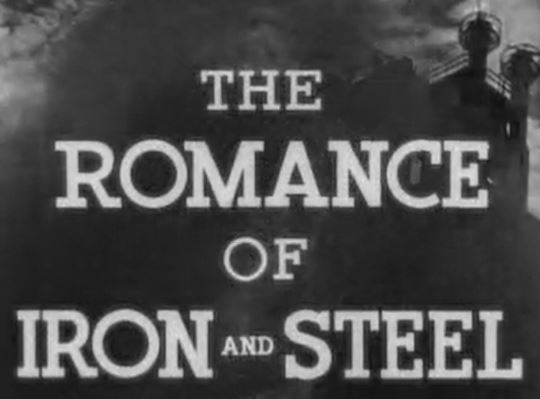Last month, we brought you a “lost” silent film found in the Cinecraft collection called “The Heart of Cleveland.” That film from 1925 pre-dated the founding of Cinecraft in 1937 so it wasn't something the company produced. How it came to be part of Cinecraft’s collection isn't known, but we do speculate in the article if you are interested.
Click here for more information about the Cinecraft collection at Hagley

In addition to the print, we also have a copy of the film’s script showing edits made at some point during its development. Another interesting note, the original credits in the script attribute the film to Tri-State Productions. Cinecraft founder Ray Culley worked on a series of General Electric films for the Cleveland based Tri-State prior to founding Cinecraft in 1937. It’s possible the project originated at Tri-State and Culley inherited it when he started his own business. While the mechanics of how the film came to be a Cinecraft production might never be known, what we do know is that this is an early example of Ray Culley’s skill as a filmmaker.
In an article from the Cleveland Plain Dealer about The Romance of Iron and Steel in 1938, the paper’s movie critic W. Ward Marsh wrote
“...for perfection in all departments (camera work, editing, narration, etc.) neither Hollywood with its too infrequent excursion into the documentary nor England with its boastful specializing in the documentary have produced anything to beat it.....So excellent is the technical work and so genuinely informative is the picture that I urgently recommend it be edited down to single reel length...and be issued to movie theaters.”
Even while factoring in the writer’s hometown bias for a film produced in Cleveland, it's hard to argue against the critics' assessment of the film's quality. It is well written, expertly paced, and, most importantly, informative. Even watching it over 80 years later, the film remains compelling.
Perhaps the most impressive technical feat of the film is a series of tracking shots taken from overhead cranes that offer a unique perspective into the process and machinery used to make rolled steel. It's a creative technique that elevates the film's production value beyond the film’s actual budget. Here is the longest of these tracking shots from the film:
To watch the entire film, check it out in the Culley Family Cinecraft Collection: https://digital.hagley.org/FILM_2018201_FC09
Other notes about The Romance of Iron and Steel
The film was narrated by Basil Ruysdael who started his career as an opera singer before becoming an actor. He served as the commercial spokesman for DuPont’s Cavalcade of America on NBC Radio beginning in 1940, which was among his many roles on radio. He appeared as a detective in the first Marx Brothers film The Cocoanuts. His last role came as a voice actor for Disney's One Hundred and One Dalmatians.
George Verity, the ARMCO founder who appeared at the end of the film, started the company in 1899 and served as the company president until 1930. A retired steam towboat named after Verity is now a museum in Keokuk, Iowa:
The film’s name likely originates with the 1936-37 Great Lakes Exposition held in Cleveland. “The Romance of Iron and Steel” was one of the Expo's themes. The massive fair on Lake Erie promoted business and industry in the area.
To dive into the Cinecraft collection at Hagley, start here at our Digital Archives: digital.hagley/cinecraft
Cinecraft is still in business and specializes in eLearning and training & development projects for a national clientele and continues to develop various motion picture projects for business and non-profit clients. For more information, please visit www.cinecraft.com.
Kevin J. Martin is the Curator of Archives and the Andrew W. Mellon Curator of Audiovisual and Digital Collections at Hagley Museum and Library.
